- Home
- Lewis Carroll
Alice's Adventures in Wonderland and Through the Looking Glass (B&N) Page 3
Alice's Adventures in Wonderland and Through the Looking Glass (B&N) Read online
Page 3
She quietly walked away: but she couldn’t help saying to herself as she went, “Of all the unsatisfactory—” (she repeated this aloud, as it was a great comfort to have such a long word to say) “of all the unsatisfactory people I ever met—” She never finished the sentence, for at this moment a heavy crash shook the forest from end to end (p. 225).
Like chess and a logical argument, a conversation is a game having a beginning, middle, and end, and is conducted according to certain rules or rituals (manners). Most of Alice’s non-human interlocutors (chess pieces, mice, eggs, toads, walrus, lion, unicorn, flowers), however, seem to be playing a different game than Alice. They claim to not know what Alice “means” or else proclaim, as Humpty Dumpty does, that a word “means just what I choose it to mean—neither more nor less” (p. 219). Alice’s conversations, when they don’t end unsatisfactorily in silence, tend to go in a circle.
For the child, the ability to have and share feelings might even be inversely related to language acquisition, so that paradoxically the more skilled the child is in language, the less able she is to express the intensity of her first feelings, which are by definition primal and non-verbal. The creatures of Wonderland, from kittens to mad hatters, constitute a kind of mute allegory for the things like hunger, love, and sex that Alice feels, and they seem difficult to communicate to her interlocutors. An unsure speaker is simply one whose words don’t feel real. But in Alice what is real and what is fantasy? Language enables the child to name the world and exert mastery over it; but in relation to feelings, language can seem impoverished, like a starving of one’s desires. The language of one’s own dream may not be all nourishing, after all. After waking, Alice’s sister tells her to run in and have some tea. And in Looking-Glass, Alice promises the kitten a breakfast accompanied by a tale of the Walrus and his oysters—as if poetry were nourishment.
In Alice tears are shed, creatures are taken for a stroll and then devoured, and Queens scream their heads off. Yet if strong feelings and unreasonable desires abound in the Alice books, understanding the feelings of others is scarce. In chapter I of Looking-Glass, the Queen, after looking at the King’s memorandum book that Alice has written in, proclaims to the King: “That’s not a memorandum of your feelings!” (p. 163). After the mouse tells his sad tale of persecution, Alice asks, “But why do you call it sad?” (p. 36). Having feelings is one thing; understanding someone else’s is another. After hearing Tweedledee and Tweedledum’s story of the Walrus and the Carpenter, even the compassionate Alice says: “I like the Walrus best . . . because you see he was a little sorry for the poor oysters” (p. 195). Alice is uncertain what amount she should feel, which is to say her feelings feel like guesses. Alice first spied the Mock Turtle
sitting sad and lonely on a little ledge of rock. . . . She pitied him deeply. “What is his sorrow?” she asked the Gryphon. And the Gryphon answered, very nearly in the same words as before, “It’s all his fancy, that: he hasn’t got no sorrow, you know.” . . .
“This here young lady,” said the Gryphon, “she wants for to know your history, she do.”
“I’ll tell it her,” said the Mock Turtle in a deep, hollow tone. “Sit down, both of you, and don’t speak a word till I’ve finished.”
So they sat down, and nobody spoke for some minutes. Alice thought to herself, “I don’t see how he can ever finish, if he doesn’t begin” (p. 108).
When is a feeling not a feeling? Perhaps when you want to share a feeling that you can’t. Alice’s feelings and her conversations go nowhere because they have no one to go to. Alice generally experiences her emotions by herself—that is, her emotions, like pity, are usually rapidly substituted by a chain of dissatisfaction and worry. For this reason, they appear shallow and unreal.
INEDIBLE PUNS AND WORDPLAY IN WONDERLAND
“That’s a great deal to make one word mean,” Alice said in a thoughtful tone.
“When I make a word do a lot of work like that,” said Humpty Dumpty, “I always pay it extra.” (p. 219)
It is not surprising that Alice’s Adventures in Wonderland, like any drama about growing up, is also a drama of the arbitrary, nonsensical, and unending transformations and erasures that characterize games, conversations, and literature. Thus Alice is a novel of growing up that is populated with twins and twinned occurrences, speakers who repeat exactly what another says, people appearing and disappearing out of nowhere, birthday presents that don’t feel like presents, and Carroll’s parodies of conventionally didactic school verses. Many of the characters in Alice don’t just speak in rude puns and insoluble riddles—they are puns and riddles that have been transformed into characters. Both characters and narrative events are at times indistinguishable from nonsensical linguistic transformations. In the Humpty Dumpty chapter in Looking-Glass :
The egg only got larger and larger, and more and more human: when [Alice] had come within a few yards of it, she saw that it had eyes and a nose and mouth; and when she had come close to it, she saw clearly that it was HUMPTY DUMPTY himself. “It can’t be anybody else!” she said to herself. “I’m as certain of it, as if his name were written all over his face!”
To which Carroll disingenuously adds: “It might have been written a hundred times, easily, on that enormous face” (p. 214).
Growing up, like writing a pun or falling in love, is the occasion for perhaps some of the most absurd of human feelings. These feelings are suggested by the non-conversations, questions answered with riddles, and wordplay of the Alice books: paronomasia, linguistic substitution, antanaclasis, anagrams, punning, palindromic progression and erasure, repetition with minor variation, spurious etymological derivations, and reverse mirroring. These linguistic “events” take place in a time that is not clearly the present (“in about half no time!” [p. 106] as the Queen puts it ) but which seems to reference an endless becoming. Such activities are related to Alice’s erroneous multiplication tables, the “sweet little nothings” whispered by lovers, Alice’s unwitting jibes, and the unforeseen appearance of the Cheshire Cat’s grin. A short excerpt from one of the Duchess’s speeches in “The Mock Turtle’s Story” is exemplary. The passage begins with an injunction not to imagine something, passes through the vicissitudes of understanding, and finally ends with an entreaty to not speak; this series of transformations is similar to growing out of childhood itself, which is suggested here by a birthday present one doesn’t want to have:
“I quite agree with you,” said the Duchess; “and the moral of that is—‘Be what you would seem to be’—or, if you’d like it put more simply—‘Never imagine yourself not to be otherwise than what it might appear to others that what you were or might have been was not otherwise than what you had been would have appeared to them to be otherwise.’ ”
“I think I should understand that better,” Alice said very politely, “if I had it written down: but I ca’n’t quite follow it as you say it. . . . Pray don’t trouble yourself to say it any longer than that,” said Alice.
“Oh, don’t talk about trouble!” said the Duchess. “I make you a present of everything I’ve said as yet.”
“A cheap sort of present!” thought Alice. “I’m glad people don’t give birthday-presents like that!” But she did not venture to say it out loud (p. 105).
Growing up, which is what Alice is in the midst of, is a strange, nonsensical, and paradoxical event in which boredom and interest, possibility and probability, childish fantasy and adult reality intermingle. If possibility is about desire, then probability is about its limitations, the things Alice can’t say or do. And that is where nonsense, which is where the probable becomes indistinguishable from the possible, comes into play, along with anxiety, misunderstanding, puns, and death. Our desires, like puns, are absurd to think about, imagine, speak, or exchange. Moreover, our desires are almost impossible to realize. The things that happen in the Alice books are not quite events or exchanges; they are more like meta-events, things that are logically conceivable within a s
pecified range of actions (possible) or things that are logically likely within a range of actions (probable). All events in the Alice books thus feel like non sequiturs. What kind of sense does growing up make to the child trapped in a present that has not yet become future? “I don’t know when I began it, but somehow I felt as if I’d been singing it a long long time!” (p. 190). Freud noted in The Interpretation of Dreams that “in the unconscious, nothing can be brought to an end, nothing is past or forgotten.” 8 As Adam Phillips notes, for children, “answers merely interrupt questions.”9 The opposite of endless waiting may be endless and infinite becoming, with Alice growing larger one moment and shrinking the next. If Alice’s wishes were merely boring repetitions of things she already knew, rather than nonsensical re-expressions or puns of her never-ending desires, she would have nothing more to be curious about or quibble with—in others or in herself—and not being able to do these things, she would be left with something anomalous and inhuman.
In the second “fit” of Carroll’s The Hunting of the Snark: An Agony in Eight Fits, the poet calls attention to the division, seen as a kind of “interruption,” inherent in the (verbal) definition of a thing. The narrator of the poem proposes “one” of the characteristics of a snark but like a magician ends up by specifying two: “It will sigh like a thing that is deeply distressed: / And it always looks grave as a pun.” With its doubled meanings contained (accidentally) in a single word, the pun suggests the inexpressible, a kind of irreducible argument that takes shape as a single word which, rather than repeating its meaning, splits violently into two senses. Like desire, the pun is inexpressible. Its meanings sprawl endlessly, non-purposively, and violently. Our wishes, which take grammatical form as questions,10 are a kind of metaphysical nonsense about the unspecified things they may become. Childhood desires exist to be transformed into something else: a book, a pet kitten, a lover, a grown-up sister, even a Cheshire Cat or a White Knight.
The story of Alice is a story of what her desires, her curiosity, will find and how, in the process, they become something else.” Elizabeth Sewell notes of nonsense words, “If a word does not look like a word . . . , the mind will not play with it.”11 Yet nonsense, like fertility, “has a fear of nothing.”12 Or, as Jacques Lacan noted, “the signifier is stupid” and in the pun engenders “a stupid smile.”13 In a world where desires are like puns, the dispute between true versus false becomes absurd, like a puzzle without a solution, a game without rules, effects without causes, desires without satisfactions—or a grin without the cat. Such a condition is grave; the Queen, upon witnessing the chaos of a croquet game, demands to trump the untrumpable by having “everybody executed, all round” (p. 99). Carroll conceived of the Queen “as a sort of embodiment of ungovernable passion—a blind and aimless Fury.”14 Thus much of the nonsense, curiosity, and desire of the Alice books can be answered only with silence or death—or other radical misinterpretations. But, of course, one wants to know if death is a misinterpretation of nonsense—or is it the other way around? To put it in terms relevant to Alice, is death nonsensical, or is nonsense a cloak for death? The Mouse’s tale is at bottom something to read. It is an emblematic poem about injustice, shaped like a mouse’s tail. It begins on a Monday morning with Fury having “nothing to do” (p. 37) and culminates with the unspeakable: Fury’s illogical persecution of and condemnation of a mouse to death—a deadly joke about the literal and figurative end of a tale/tail, which is to say a joke about nothing.
Unlike the endless substitutions of the pun, death “confronts us with the fact that, despite the capacity for substitution that development, in psychoanalytic terms, depends upon, there are no substitutes.”15 The joke and pun put up a shabby, even stupid resistance to things that must die, and so they are a paean to continuing misinterpretation. The pun is grave; but so is all language, which ceases at the borders of rudeness in order to conceal the fact that after a certain point, there are no more things to be said, that talking is a nonsensical covering for the rude silence that cannot be concealed. As Freud noted, unlike the child, the “civilized adult . . . can hardly even entertain the thought of another person’s death without seeming to himself hard-hearted and wicked.”16 Alice mentions her cat Dinah and unwittingly brings silence to her interlocutors. Alice is not yet fearful of death or bodily changes. She is learning that to be subjected to the desires of others is to be subjected to unbearable puns and nonsensical commands. To the Queen’s frantic calls for a beheading, and to her query about why people are lying face down on the ground, Alice responds:
“How should I know?” said Alice, surprised at her own courage. “It’s no business of mine.”
The Queen turned crimson with fury, and, after glaring at her for a moment like a wild beast, began screaming “Off with her head! Off with—”
“Nonsense!” said Alice, very loudly and decidedly, and the Queen was silent (p. 93).
Alice is not surprised by what she doesn’t know because she has no desire to know it (“It’s no business of mine”), and this serves as an antidote to the Queen’s fury. But fury may be no less and no more expressible than the other emotions Alice has. One can no more choose to be or not be angry than worried or curious. Among many other things, good manners may be Alice’s pragmatic way of living within her own wishes. Saying no is merely a polite way of saying no to more nonsense than the mind can bear.
INDETERMINISM AND THINGS NOT EATEN
“I like the Walrus best,” said Alice: “because you see he was a little sorry for the poor oysters.” (p. 195)
A world consumed by non-stop punning is an indeterministic world where chance rules and creates what the nineteenth-century French statistician Poisson termed the very rare event—what became known as the Poisson distribution. Following such a mathematical curve, all events in the Alice books are equally unexpected concatenations, and many characters are improbable hybrids of animals and people and insects, most of whom speak reasonably well. Being a pragmatist, Alice wonders, and then worries, about what she will eat. She also, less normally, wonders and worries if she will be eaten, though she fails to realize that for something to eat, something else must be eaten. Thus she mentions her cat Dinah to a mouse and birds. Many of the creatures behave like strange recipes for inedible foods, food that would prefer to talk back than be consumed. The tove is a badger with the “short horns of a stag,” and a borogrove is an extinct “kind of Parrot” that “lived on veal.”17 Wonderland and the world beyond the looking glass is home to a Rocking-horse-fly that is made of wood and swings from branch to branch, a Dragon-fly whose body is formed of plum pudding, and a Bread-and-butter fly whose wings are thin slices of bread and whose head is a lump of sugar. Edible lobsters dance the quadrille. The chief ingredient of Mock Turtle soup sings a rather sad and piquant song, and Alice travels in a carriage compartment that holds a goat, a gentleman dressed in white paper, a horse, a beetle, and a gnat that is large as a chicken but whose voice sounds like that of a horse. All this follows upon Alice’s seeing a “regular bee” that was quite irregular: “in fact, it was an elephant” (p. 177).
These cross-pollinated creatures are sui generis beings who resemble another strange creature in Carroll’s works: the portmanteau word—the highly individuated, one-of-a-kind linguistic phenomenon that is predictably unreliable at communicating meaning. Like most things whose actions are improbable, such creatures can hardly be believed. They appear to be governed neither by rule nor by law. In this sense, very little can be inferred about their nature or their genus. The contemplation of life forms turns out to be frustratingly abstract; the creatures are as unpredictable as unsolved problems. And like most anomalous specimens and unappeasable desires, they seem to have gone extinct before their proper time, as witness the Dodo and borogrove. Yet such is the accidental nature of organic life itself, the life of desire, which the French philosopher Bichat noted defies “every kind of calculation, for it would be necessary to have as many different rules as there are diff
erent cases.”18 In this sense, Wonderland is a belated nineteenth-century ecosystem, a pastoral mathematical formula on the verge of logical extinction. In this system, determinism, as an immutable law, is being subjected to the twentieth century’s “laws” of chance. There is a simpler way to state this: Many creatures in the Alice books are edible things that remain inedible to Alice: lobsters, mock turtle soup, a rabbit, a duck, a pig, a fish, oysters, a whiting, an egg—Alice has no desire to eat them. Our appetites are arbitrary. If our desires are not surprising to ourselves, they probably don’t work very well as desires. One of the first things Alice eats is something that is, from a botanical standpoint, neither living nor dead and so, from a logical standpoint, incapable of having desire: a mushroom.
For all her worrying, Alice does little eating, and this suggests three things: that her desire to eat remains unresolved (a kind of self-punning on her wants); that her consumption patterns are anarchic rather than habitual; and that she is too reasonable with her appetites, conversing with foods (that she should be eating). Being a pragmatist with one’s emotions is dangerous play. Instead of feeling, Alice tends to worry, just like the White Rabbit who is a parody of an adult male who worries too much. Worries are a form of policing one’s desires, often before they become desires. Yet worries are not easy to see for what they are. Like a pun, the White Rabbit keeps disappearing. Worries are almost feelings. Like minor disturbances, they disappear and begin again and disappear and begin again. They are the feelings we don’t want to be having—but are.

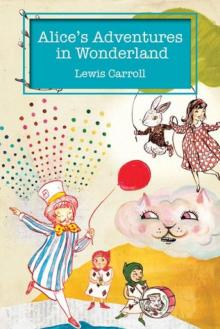 Alice's Adventures in Wonderland & Through the Looking-Glass
Alice's Adventures in Wonderland & Through the Looking-Glass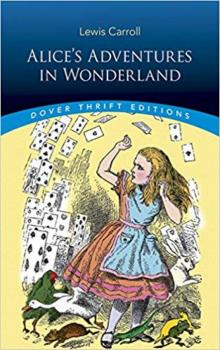 Alice's Adventures in Wonderland
Alice's Adventures in Wonderland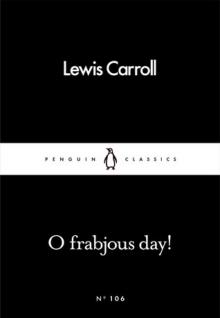 O Frabjous Day!
O Frabjous Day!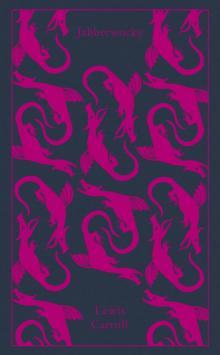 Jabberwocky and Other Nonsense
Jabberwocky and Other Nonsense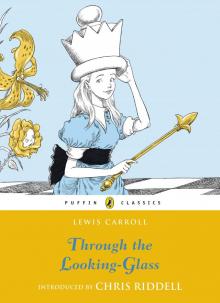 Through the Looking-Glass and What Alice Found There
Through the Looking-Glass and What Alice Found There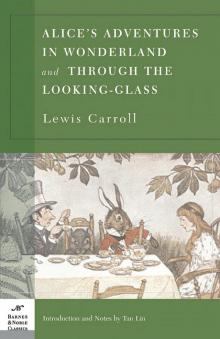 Alice's Adventures in Wonderland and Through the Looking Glass (B&N)
Alice's Adventures in Wonderland and Through the Looking Glass (B&N)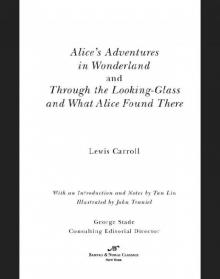 Alice's Adventures in Wonderland and Through the Looking Glass (Barnes & Noble Cla
Alice's Adventures in Wonderland and Through the Looking Glass (Barnes & Noble Cla The hunting of the Snark
The hunting of the Snark The Complete Alice in Wonderland (Wonderland Imprints Master Editions)
The Complete Alice in Wonderland (Wonderland Imprints Master Editions) Alice in Wonderland: The Vampire Slayer
Alice in Wonderland: The Vampire Slayer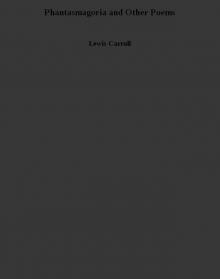 Phantasmagoria and Other Poems
Phantasmagoria and Other Poems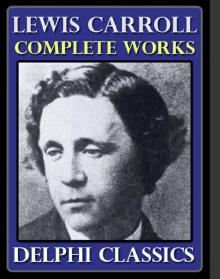 Complete Works of Lewis Carroll
Complete Works of Lewis Carroll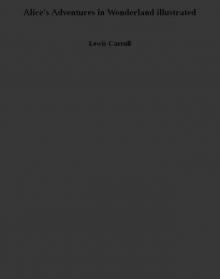 Alice's Adventures in Wonderland illustrated
Alice's Adventures in Wonderland illustrated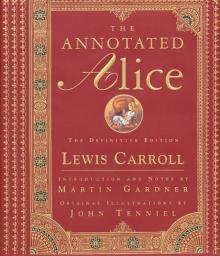 The Annotated Alice: The Definitive Edition (The Annotated Books)
The Annotated Alice: The Definitive Edition (The Annotated Books)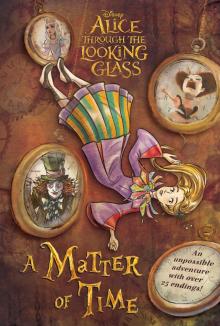 Through the Looking Glass
Through the Looking Glass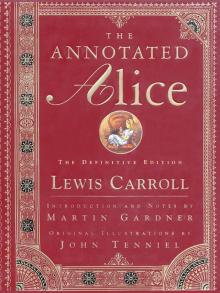 The Annotated Alice
The Annotated Alice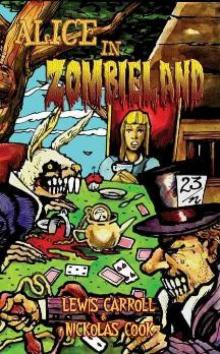 Alice in Zombieland
Alice in Zombieland